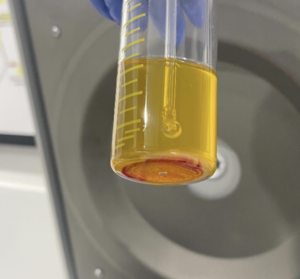The Science behind PRP Hair Rejuvenation
PRP is made from a small amount of your own blood. Blood contains platelets that are rich in growth factors. These growth factors are like natural "signals" that can stimulate cell growth and repair. When PRP is injected into the scalp, these growth factors go to work. They stimulate the hair follicles, which are tiny structures in your skin that produce hair.
By stimulating the hair follicles, PRP encourages them to produce thicker, stronger hair strands and can even reactivate hair follicles that have become dormant, potentially leading to new hair growth.

What does the process involve
The process of using Platelet-Rich Plasma (PRP) for hair loss, including the centrifugation step and the targeting of dormant hair follicles, typically involves several key stages:
During the PRP procedure, a small amount of your blood is drawn from a vein in your arm, typically similar to a routine blood test.
The collected blood is placed in a specialised centrifuge machine. The centrifuge spins at high speeds to separate the blood into its various components based on density.
After centrifugation, the PRP, which is rich in platelets and growth factors is injected directly into the areas of the scalp with thinning hair or dormant hair follicles. The PRP solution is strategically distributed to stimulate hair follicles and encourage hair growth.
PRP therapy for hair loss has gained popularity for its potential to revitalise dormant hair follicles and improve hair density naturally. It's essential to consult with a qualified healthcare provider to determine the best approach and treatment plan for your specific needs.